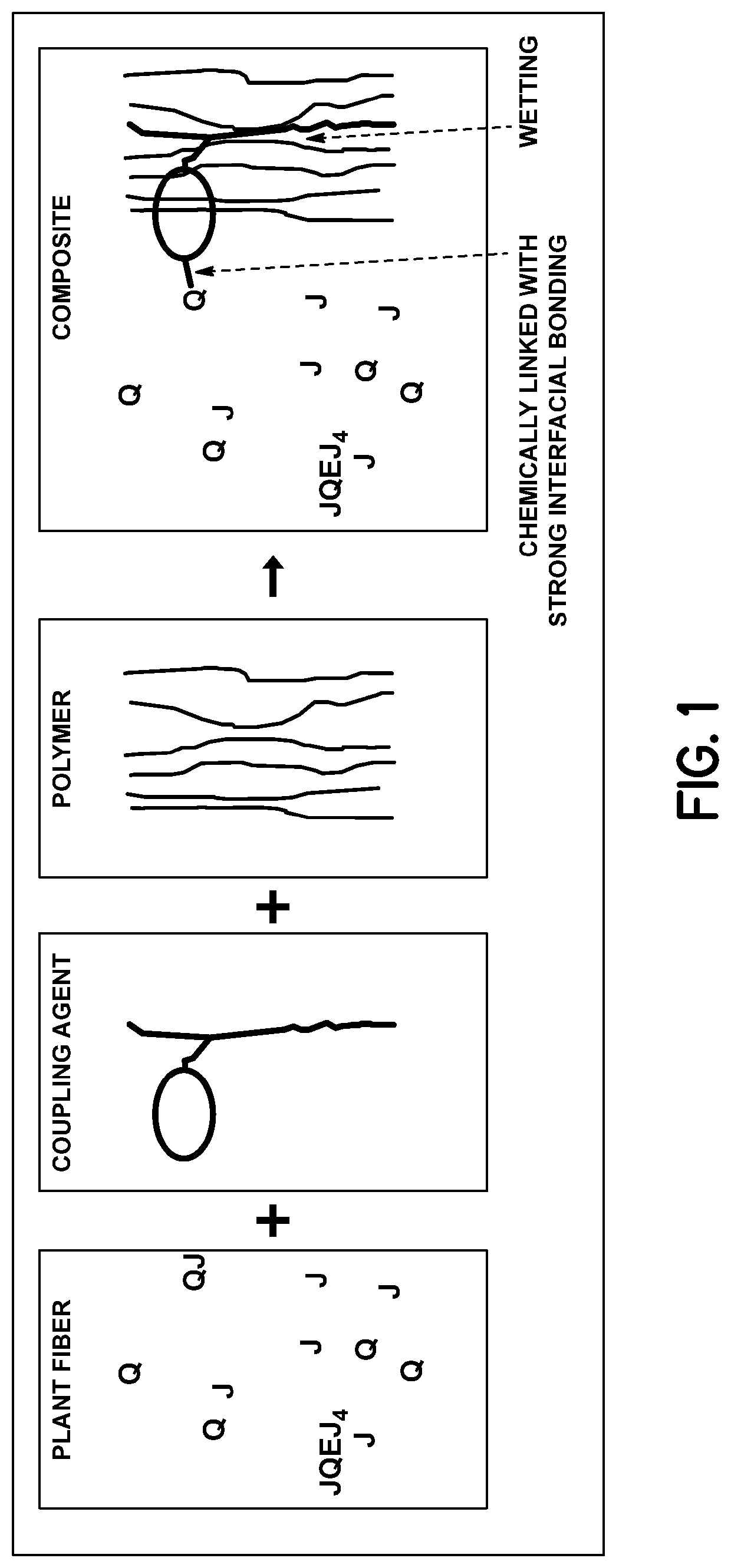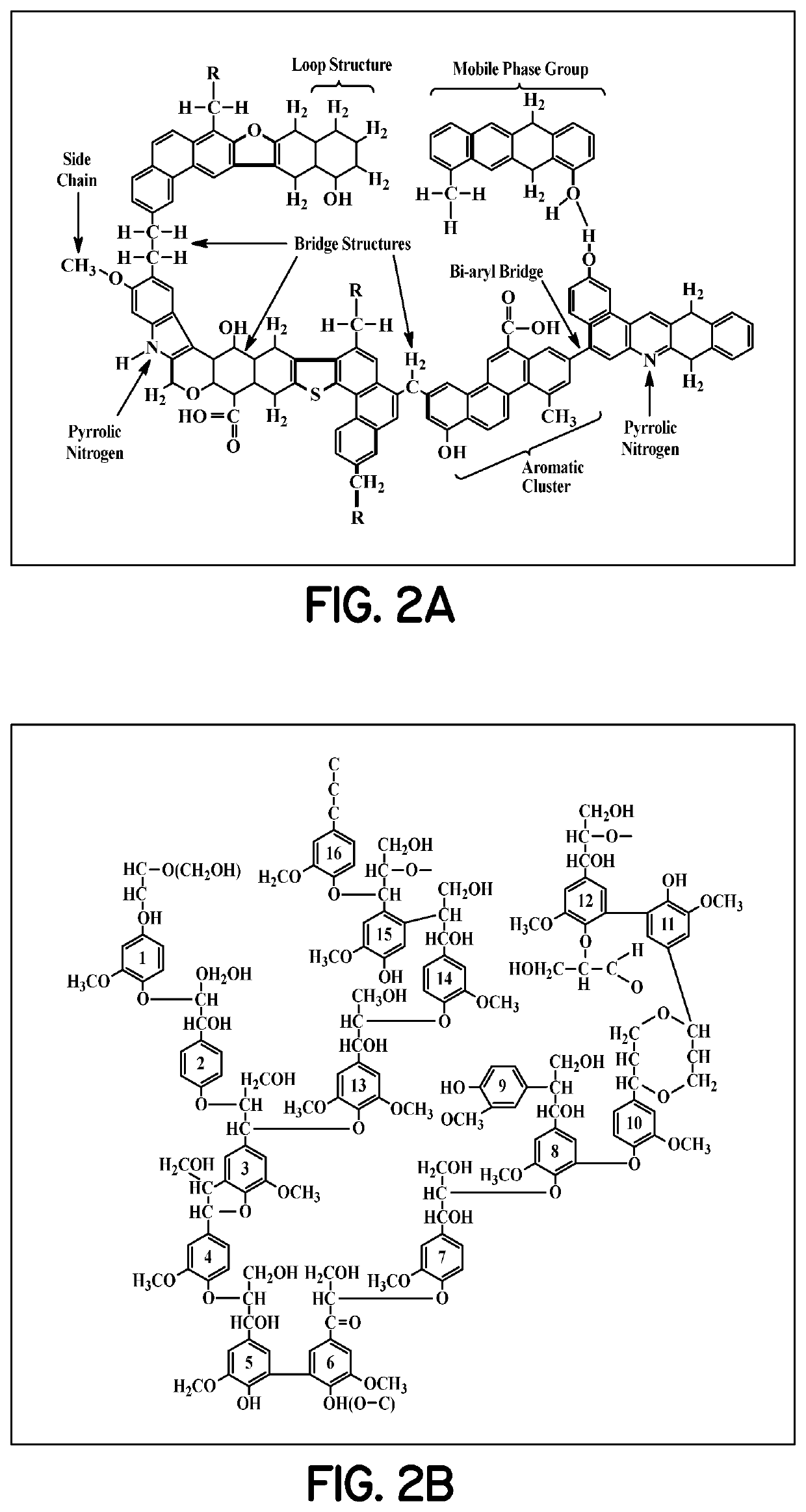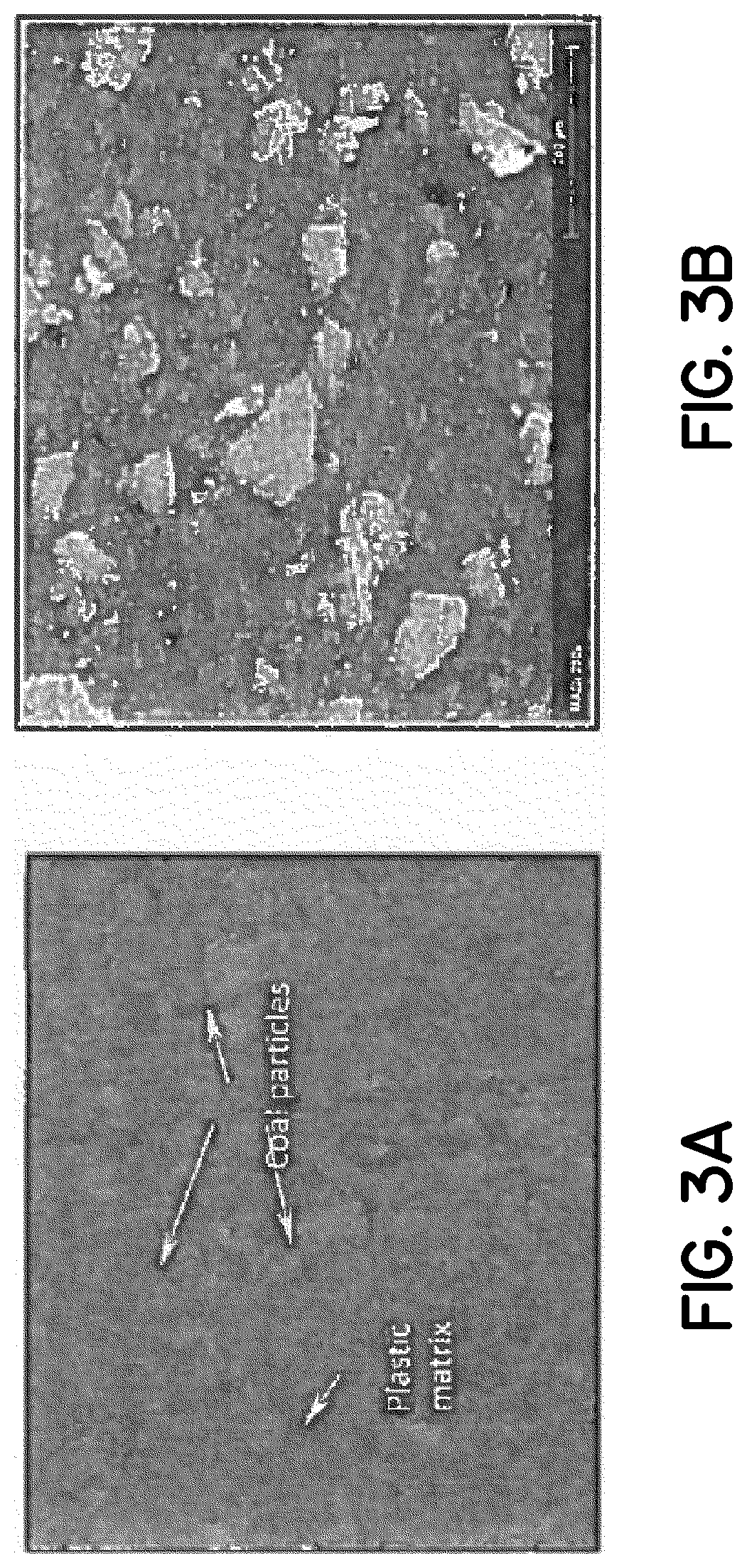Coal plastic composites
a technology of coal plastic and composite materials, applied in the field of plastic composite materials, can solve the problems of limiting the solids percentage to 30%, experiencing a myriad of problems, and difficult recycling, and achieve the effects of low water absorption, high degree of flexural strength, and cost-effectiveness
- Summary
- Abstract
- Description
- Claims
- Application Information
AI Technical Summary
Benefits of technology
Problems solved by technology
Method used
Image
Examples
examples
[0047]This study described in the Example below examined the effectiveness of using coal as a filler in making reinforced thermoplastic composites, termed coal-plastic composites (CPCs). CPCs were evaluated to replace commercially available wood plastic composites (WPCs) made with thermoplastics reinforced with wood flour, typically used as structural components in buildings, construction, automotive and electrical industry. Three coal types, namely Pittsburgh No. 8, Kittaning, and Upper Freeport were evaluated. CPCs were made with virgin high density polyethylene and polypropylene, as well as recycled polyethylene. The impact of coal particle size, coal content, polymer type, and coupling agent content on the tensile strength, elastic modulus, flexural strength, flexural modulus, coefficient of thermal expansion, water absorption, and heavy metal leaching of CPCs was investigated. CPCs demonstrated flexural strength comparable to commercially available WPCs. Additionally, CPCs demo...
PUM
| Property | Measurement | Unit |
|---|---|---|
| wt % | aaaaa | aaaaa |
| wt % | aaaaa | aaaaa |
| particle size | aaaaa | aaaaa |
Abstract
Description
Claims
Application Information
 Login to View More
Login to View More - R&D
- Intellectual Property
- Life Sciences
- Materials
- Tech Scout
- Unparalleled Data Quality
- Higher Quality Content
- 60% Fewer Hallucinations
Browse by: Latest US Patents, China's latest patents, Technical Efficacy Thesaurus, Application Domain, Technology Topic, Popular Technical Reports.
© 2025 PatSnap. All rights reserved.Legal|Privacy policy|Modern Slavery Act Transparency Statement|Sitemap|About US| Contact US: help@patsnap.com



